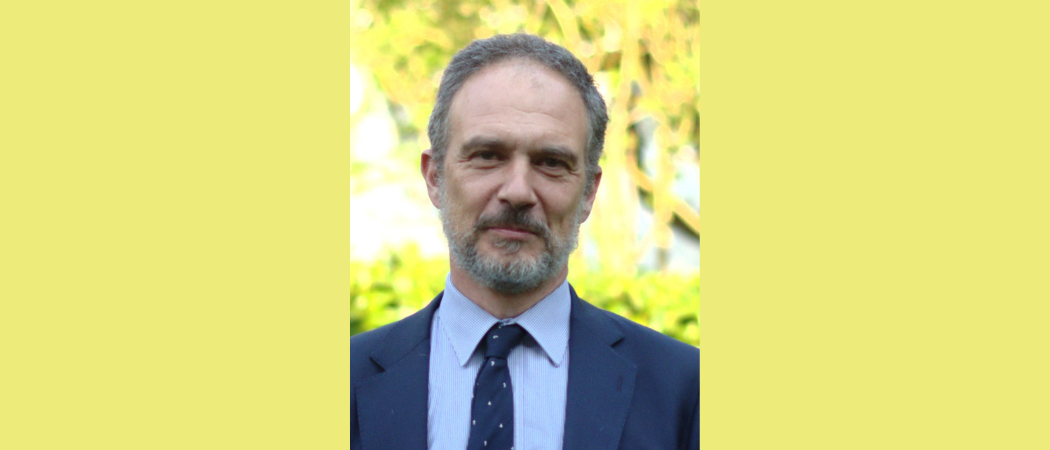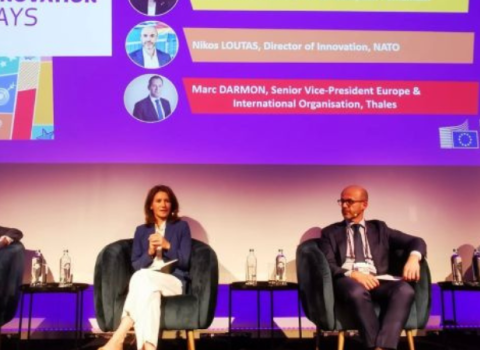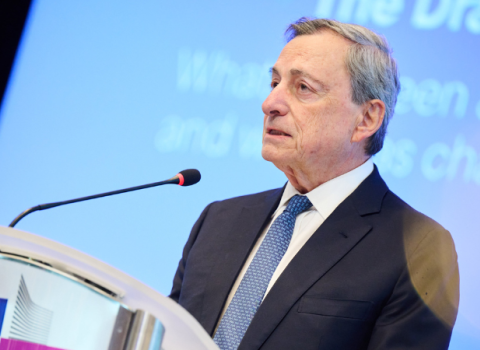The EU tries to target R&I funding to specific goals – but doesn’t achieve the scale to compete globally. Time to choose, a former official says

Nikos Kastrinos, independent science and technology policy analyst, and a former European Commission official involved in Framework Programme planning and implementation.
40 years of Framework Programmes in 70 years of EU research: a brief history, by Nikos KastrinosEditor’s note: This Viewpoint is drawn from a history of EU research and innovation policy recently completed by the author. It was also underlying documentation for much of a short Framework Programme history that Science|Business published in February. You can read Kastrinos’ full report here. |
This year marks the 40th anniversary of the EU’s Framework Programme – what one former Commissioner declared as “the biggest public research programme in the world.” But a common EU science and technology policy goes back further, to the founding of the postwar European community in 1951. Its development since then has been challenging, often frustrating. It is now a very important pillar of Europe’s polity, economy and society; and that in itself is no mean feat.
But the story isn’t finished. The technology gap with the US, the most important justification for the start of the Framework Programme in 1984, did not disappear and has been joined by a new technology gap emerging with China. Can this then be considered a failure?
Two points need to be made here. The first point is about means and ends. The technology gap is primarily due to a differential in investment between Europe, the US and, now, China. Making it disappear would require bridging the gap in investment and compensating for the effects of historical lags in spending. However, even when the Commission in the past declared willingness to address the gap, it was, with the exception of Framework Programme 6 from 2002 to 2006, not given the level of resources it asked for. And even in FP6, the EU was very far from bridging the technology gap with the US.
This brings the second point, about the logic of addressing challenges that are not overcome, and about the ways in which the value of EU R&I policy is argued for. A key word in this has been “focus” – by which I mean the Commission’s careful selection of priorities and projects that complement, rather than duplicate, member state programmes. Invaluable though it is, focus does not compensate for lack of scale, in the same way that addressing a problem does not compensate for not solving it. The efforts of the FP have for the most part been similar in scale to the efforts of the US National Science Foundation – by US standards, not a large agency, and one focused mainly on fundamental science rather than the enormous breadth of topics that FP funds.
The Framework history
The FP itself came about because of a felt need to coordinate between disparate focussed efforts, and to create scale and relative budgetary stability in time. The Commission first proposed such a framework in 1977, but convincing the member states took some doing. In 1983 the first framework legislation was approved, for a programme start in 1984. It was what it said on the tin: a frame placed around programmes. It took another decade before the box started to constrain the programmes, and to define political objectives of its own.
During that decade the European effort had to be additional to that of the Member States – to not overlap but to add. Yet this was impossible to define without political agreement on the overall objectives. What if the national and European objectives did not align? Could it be that instead of adding, the common effort could deduct from the effectiveness of national efforts or derail them? The Commission’s story has been consistent throughout the years: that Europe together is better for all member states. Yet, what togetherness means in the Framework Programme – in what way it is German and French and Spanish and Czech – has been a challenge to explain to the member states. Less so to their researchers. By FP4, from 1994 to 1998, there were hardly any research institutions across Europe that were not touched by the Framework Programme.
The political coming of age for the FP was an effort to address the challenges and needs of European citizens and to impress upon them the importance of the FP, over and beyond anything that had to do with the technology gap. This signalled a period in which the FP had gone beyond the need to be additional. Its programmes had become recognisable and important parts of every national research scene in Europe. The European Research Area and its political success were proof of that. It also signalled a period in which the narrative of the FP has become much more tangled with the politics of the narrative of the EU. It is an era in which citizens are called upon to form expectations from the FP to not only address challenges but also to resolve them.
In this century the FP grew a lot, and so did its ambitions and instruments. It grew as a framework around increasingly diverse efforts and endeavours, and it grew as a programme with all kinds of interactions and interdependencies with other programmes and policies. It became a space of increasing complexity inhabited by a host of contractual arrangements between funders and performers of research and innovation in multiple roles, be they government ministries, funding agencies, companies, research institutions, non-governmental organisations, lobby groups, government research centres, institutes, foundations and any other form of legal entity one can imagine.
The choice to come
Is this complex ecosystem healthy and productive for the European Research Area? Can it convince Europe’s citizens that it will triumph over their worries and the challenges they face?
Again, the question of scale looms large. In contrast to the science-focused NSF, the FP is driven towards an increasingly coordinating, programmatic role, leveraging investments towards specific goals through missions and partnerships. In this role it finds itself in a familiar position of lack of scale. Companies like Amazon and Alphabet have annual R&D budgets many multiples the size of FP. In fact, the five largest research-performing companies in the US spend more on R&D than the whole of Europe’s public sectors put together.
For Europe to fit the action to its ambitious words requires much more investment, and even with much more investment the fulfilment of its ambitions cannot be guaranteed. The risk needs to be shared, and the rise of partnership arrangements in the FP would seem an important means of collectivising the risks and benefits from any investments. But it is increasingly understood that the investments need to be substantial.
So, there is a future in which the next FP fits the action to the words and signals an important increase in the budget. It is a future supported by a strong alignment of the R&I priorities of the EU and its member states, growth and further expansion of partnerships, funds leveraged from other EU policies towards missions and drawn on an expansion of the EU budget as a whole. For those who desire such a future the two main challenges are political feasibility in the budget negotiations, and agency – or the lack there of – in implementing investments in ways that deliver results.
An alternative future is one in which the FP fits the words to the actions. In this scenario, it would continue in a steady state in its institutional parts (European Research Council, European Innovation Council, and other FP-related bodies). But its programming part would abandon any ambition to change the world. Instead, it would focus on making a difference in specific areas in which research is needed by EU policies, such as security, environment, social sciences and humanities.
We cannot know which path will emerge. Of course, as anyone involved in foresight studies as I have been would know, the real future that will unfold is likely to be much more complex and multidimensional than either scenario. But it is a choice to be made. Such is the project of building Europe.
Nikos Kastrinos is an independent science and technology policy analyst, and a former European Commission official involved in Framework Programme planning and implementation. The views expressed in this article are those of the author and do not necessarily reflect those of the European Commission, nor engage it in any manner.





 A unique international forum for public research organisations and companies to connect their external engagement with strategic interests around their R&D system.
A unique international forum for public research organisations and companies to connect their external engagement with strategic interests around their R&D system.